#Nash automobile
Text
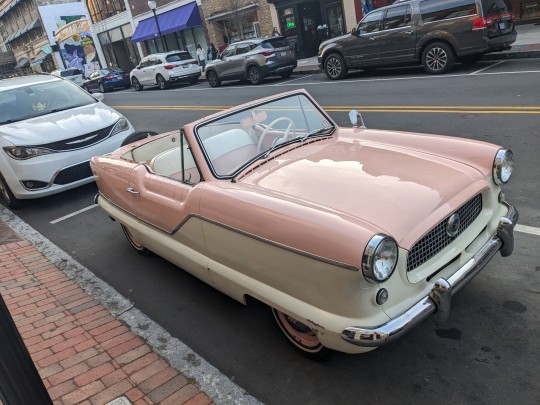
Nash Metropolitan
Spotted in Wilmington, NC
0 notes
Text

1954 Metropolitan Nash Automobile
#1954#metropolitan#Nash#car#automobile#automotive#vintageadsmakemehappy#vintage magazine#vintage advertising#magazine#advertising#1950s#50s#compact
127 notes
·
View notes
Text
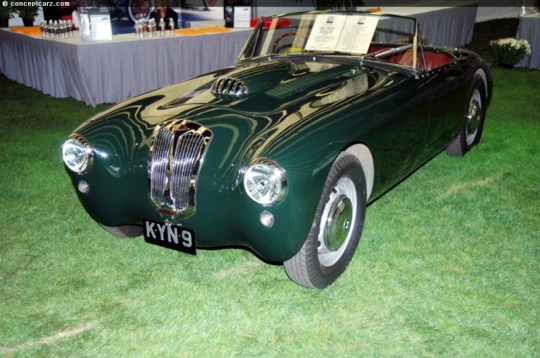
1952 Frazer Nash 2.6-Liter Prototype
#tumblr#car#cars#transportation#auto#autos#automobile#frazer nash#car blog#automotive#automobiles#carporn#car porn#transportation blog#transportationlover3
115 notes
·
View notes
Photo

The yacht harbor in Sausalito, California, photographed August 1958. Richardson Bay, with Belvedere Point in the background.
#vintage#1950s#cars#Lincoln Continental#Volvo#Willys Jeep#boats#automobiles#Citroen#Zephyr#sedan#woody#Mercury#Nash#Studebaker
93 notes
·
View notes
Photo

1952 Nash Rambler. They bought it as a 'Second' Car now they rate it first!
Source: Time Magazine
Published at: https://propadv.com/automobiles-ad-and-poster-collection/nash-ad-and-poster-collection/
19 notes
·
View notes
Text
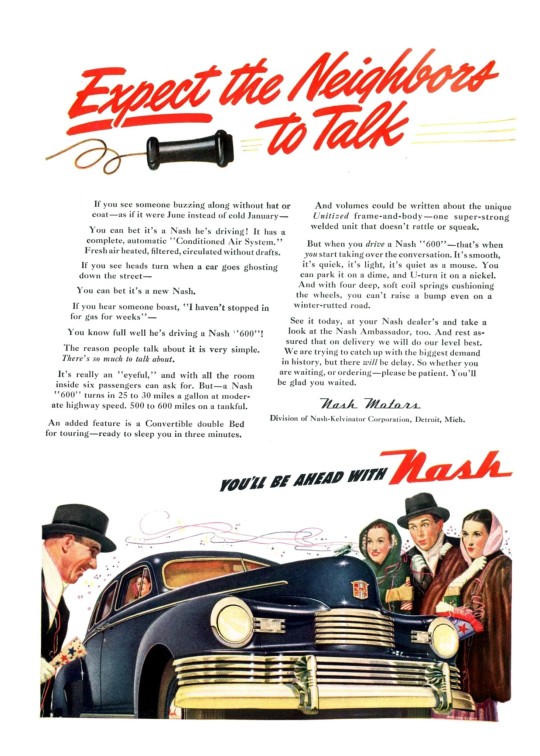
1947 Nash 600. Expect the Neighbors to Talk
Source: Time Magazine
Published at: https://www.posterhistory.com/automobiles/nash/
4 notes
·
View notes
Text
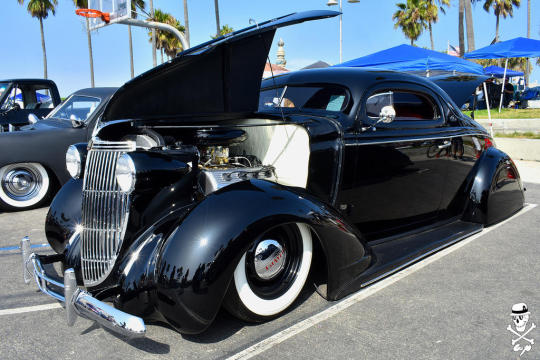
1937 Nash Lafayette Coupe
1st Annual Venice Classic
A bombed out Nash? Yes please.
#Nash#NashMotors#NashLafayette#AmericanCars#Transportation#Automotive#Automation#Automobile#CarPhotography#HotRod#1930sCars#KustomCars#BombitaCars#WhiteWallTires#VeniceClassic
0 notes
Text
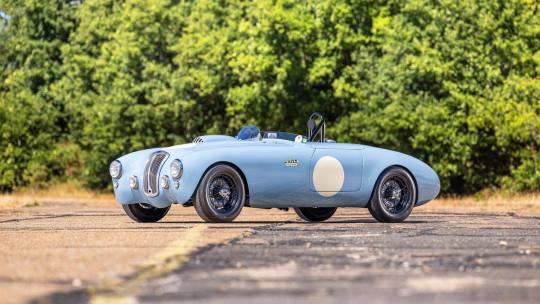
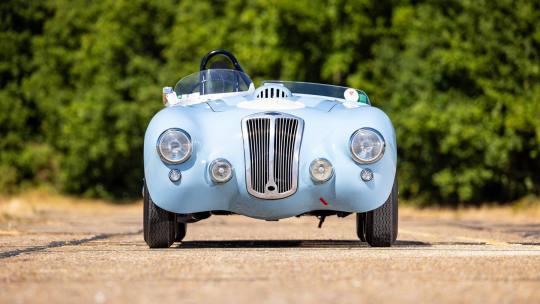
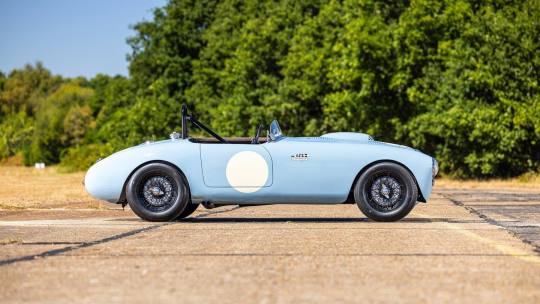
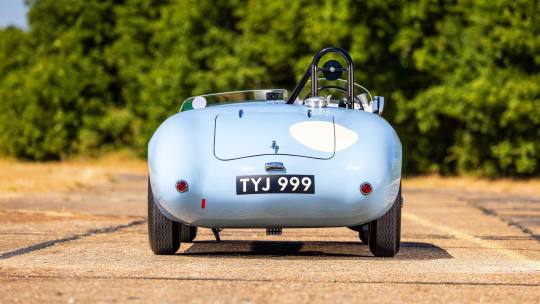
Frazer Nash Targa Florio 📸 Sotheby's. - source Rétro Passion Automobiles
44 notes
·
View notes
Text

Disney Networks - March 2024 Highlights
Moon Girl And Devil Dinosaur
Dog Day Mid-Afternoon 2/3
In the Heist 2/3
Roller Jam! 9/3
Dancing With Myself 9/3
Family Matters 16/3
The Molecular Level 16/3
Shortlidays
Hailey Banks' Disney Mini Movie Marathon 8/3
Hailey's On It!
Mer-made in Oceanside ; Full House (of Bugs) 16/3
The Umpire Strikes Back ; Magician: Impossible 23/3
Bad Bear Deay ; 2001: A Spouse Odyssey 30/3
Big City Greens
The NHL Big City Greens Classic II 8/3
Pupstruction
A Bright Idea ; The Friendliest Frog 1/3
Star Wars: Young Jedi Adventures
The Caves of Batuu ; Finders Keepers 1/3
The Starship Show ; Nash's Super Busy Day 8/3
The Prince And The Pirate SEASON FINALE 15/3
Firebuds
Skitty Kitty ; Heat Wave 8/3
Wayne's Trains and Automobiles ; Jazzy Buds 22/3
Alice's Wonderland Bakery
Dance of the Cherry Blossoms ; Alice and the Carpenter 11/3
Here Kitty Kitty ; The Bread and Butterfly Effect 18/3
A Spicy Situation / Iris on the Beach 25/3
Mickey Mouse Funhouse
The Trail Less Traveled ; Vardavar! 1/3
Daisy and the Missing Dream ; Daisy's Big Picture 8/3
Goofy Foot Grommet ; The Enchanted Rescue 29/3
Spidey And His Amazing Friends
Tiny Car Caper ; Toothy Fairy Tricks 15/3
#Moon Girl And Devil Dinosaur#Moon Girl & Devil Dinosaur#Hailey's On It!#Hailey's On It#Haileys On It!#Haileys On It#Shortlidays#Hailey Banks' Disney Mini Movie Marathon#Pupstruction#Star Wars Young Jedi Adventures#Star Wars: Young Jedi Adventures#Star Wars#Firebuds#Alice's Wonderland Bakery#Alice In Wonderland#Mickey Mouse Funhouse#Mickey Mouse#Spidey And His Amazing Friends#Spiderman#Disney Channel#Disney Junior#Disney Jr
18 notes
·
View notes
Text
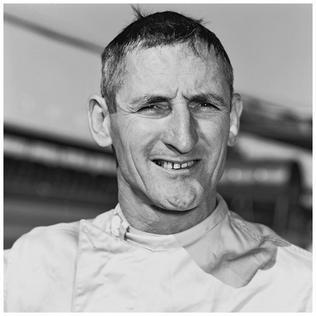
• Ken Miles was born on November 1st of 1918 in Sutton Coldfield, England. During his early life he apprenticed at a British car manufacturer. During World War II, he worked in various duties that dealt with machinery and utilized his mechanical skills. He began motorcycle racing while in the service and this would continue after his tour. After World War II, he returned to the automobile industry and to automotive racing. He acquired a Frazer-Nash racer and installed a Ford V8-60 engine. It had mile success in local and club competition.

• In 1952 Ken Miles came to the United States where he accepted a position as service manager for an MG distributor in California. Later, he would became involved with a wide range of teams and races and have a profound influence on early American road racing. His skills as a driver and fabricator quickly evolved and he became legendary on the West Coast with his competitive Specials.
• Miles first racer (that he constructed) was in 1953, while working for Gough Industries. He had been racing MG TD's for Gough, but they were often outclassed by the competition. Gough helped Miles with creating a racer, though he was unable to provide cash. What Gough did provide was use of any MG or Morris and any stock spare part.
• Miles began work on the MG R-1. The frame was created from mild steel tubing and attached to MG Series "Y" independent front suspension. The rear was comprised of a live axle. Alfin aluminum drum brakes with two-wheel cylinders were used to provide the stopping power while a Morris Minor rack-and-pinion kept the vehicle in the drivers control.
• Under the hood was an experimental racing engine that had a 1466cc displacement size. The engine would later be used by MG for their MG TF 1500. The engine had twin SU carburetors and a 10.5:1 initial compression ratio. The compression ratio was later increased to 11.6:1. The 83 horsepower engine was mated to a stock MG TD transmission which sent the power to the rear wheels.
• The car was clothed in a hand-formed aluminum body. The overall weight of the vehicle was less than 1,230 pounds. The car made its inaugural appearance in 1953 at a rainy Pebble Beach. The car had not been tested but this did not seem to matter, as it emerged victorious. Throughout the next year, the car would win all of the races it was entered, except for two. Its racing career came to an end in 1954 at Pebble Beach, when it suffered mechanical difficulties and failed to finish the race. The flywheel bolts fractures which allowed the flywheel to come loose. This resulted in the engine over-revving and it threw a rod. The R-1 Miles Special's racing career had come to an end.
• The second Miles Special racer was constructed in similar fashion to the first, but incorporated many key mechanical and design changes. Many MG components were still utilized, such as the gearbox and 1466cc MG XPEG engine. The space frame chassis was constructed from one-inch steel tubing which was lighter than its predecessor, but still retained the structural rigidity. To reduce frontal area, the driving position was lowered by nearly four inches. Other techniques were used to reduce the frontal area. The engine was tilted down in the front which did much to achieve this goal.
• The car was narrow and low, which meant changes were needed to fit all the engine components in the engine bay. The MG intake manifolds were installed upside down which allowed the carburetors to be angled and fit under the hood. The design of the vehicle was similar to the MG TF. This was done for brand recognition and to help promote the MG line of vehicles. There were differences; the R-2 had an envelope body with fenders that flared up, and over, the front and rear wheels. In the front was an MG style grille with headlights on either side. The car was finished in British racing green.
• The car was given the nickname, the Flying Shingle. Its inaugural race was in 1955 at Willow Springs. It failed to finish the race. Many of the other races in which it entered, it emerged victorious. Among its accomplishments were first place finishes at Pebble Beach and Torrey Pines. Miles was doing well in small-bore racing, but the competition was consistently keeping pace. Soon, a new machine was needed.
• Miles acceptable a position at Johnny Von Neumann's Porsche dealership. He raced during the 1956 season in a Porsche 550 Spyder and began work on a new racing Special. With von Neumann providing a generous budget, and Porsche providing ample stock components, Miles was able to construct a proper, large-budget racer. Power came from a Porsche Carrera four-cam engine that displaced 1500cc. The chassis was a Cooper Bobtail with a modified nose. The suspension was an independent setup with drums in the front and rear. The body shell was constructed of aluminum which aided greatly in the vehicles low weight of just under 950 pounds.
• Near the close of 1956, the newly created Special was brought to Pomona where it was piloted by Miles to a second place finish. At Paramount Ranch, the car was driven to a class win in the 1500cc class, and beat-out the big-bore modified class as well. The car was raced in 1956 and for part of 1957 before the von Neumann dealership was given the break they had been desperately searching for - a Porsche 550A. The car was supplied from the factory with orders to sell the R-3 Pooper Special. The R-1, R-2, and R-3 are still in existence in modern times. They are used in vintage competition and are shown at events.
• Ken Miles life came to a tragic end on August 17th, 1966 while driving a Ford J-car prototype. The car was traveling at 175 mph on a back-strech. Ken began preparing for a corner, slowing the vehicle down, but it went out of control and over an embankment. Ken was thrown from the car as it spun and went end-over-end. This tragedy brought an end to a brilliant career that began during the very early 1950s.
16 notes
·
View notes
Photo

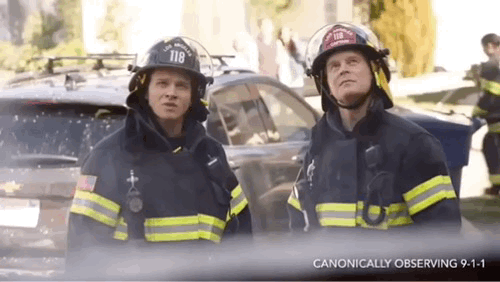

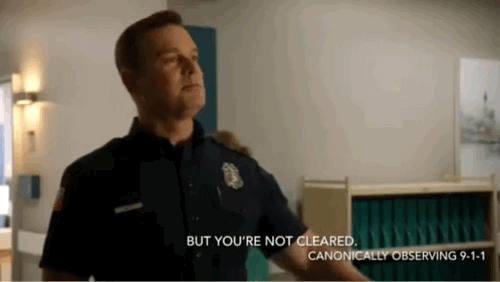











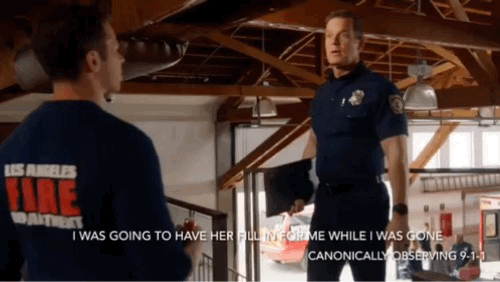
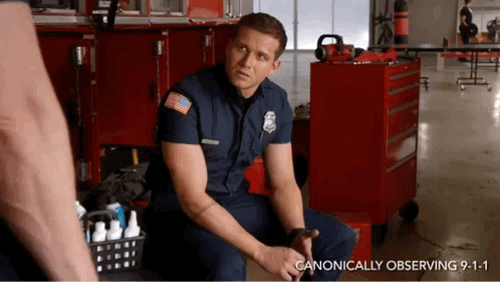
Evan ‘Buck’ Buckley: “Captain and found dad!”
Robert ‘Bobby’ Nash is captain of the 118 firehouse and he has been and continues to be more of a dad to Buck than Philip Buckley ever has been and probably ever will be. After Buck was assigned to the 118, it didn’t take long for him and Bobby to establish a mentor/mentee type of relationship but it was strained because Buck didn’t grow up with a father figure who was relatable or taught him how to be respectful since Philip was both emotionally and mentally absent. Bobby said Buck would sometimes call him “Pops” in 1x1 “Pilot” when he told Buck that they weren’t a family and the firehouse wasn’t a clubhouse. Since being reckless worked to get him attention from his parents, Buck assumed being reckless would help him get the same type of attention once he became an adult, but he was wrong. After he stole the firetruck more than once to hook up with random women, Bobby fired him but he rehired him after Hen and Athena spoke up on his behalf. The longer Buck worked with Bobby, their relationship began to merge into that of a found father and a found son within the 118′s found family.
In 2x14 “Broken” when Eddie climbed up the side of a burning house to save Alex, Buck looked at Bobby and said, “I feel like if I ever did that you’d yell at me!” and he was right because Bobby has and still does yell at Buck sometimes whenever he does something that is reckless. They’ve had their disagreements like they did in 3x4 “Triggers” and 3x5 “Rage” when Buck filed a lawsuit against the department, the city and Bobby since Bobby told the brass that Buck wasn’t ready to return to active duty even though he passed all his certification tests and had been cleared by the doctors. Even though they have argued sometimes, Buck and Bobby worry about each other. Bobby was worried about Buck’s safety and his health in 3x1 “Kids Today” after Buck coughed up blood during his welcome back to the 118 party. Buck worries about Bobby too. In 3x10 “Christmas Spirit”, after Bobby had been exposed to a dangerous chemical while the 118 responded to an automobile accident in 3x9 “Fallout”, Buck told him that he was one of the most important people in his life and he didn’t know what he would do if anything happened to him. Bobby has no problem chastising Buck whenever he goes against Bobby’s orders like he did in 4x14 “Survivors” when he climbed up that crane without any protection and he knew a sniper was on the loose. Buck went upstairs after they had returned to the firehouse and basically asked Bobby for his punishment when he said, “So...are you ever going to say anything?” and Bobby said, “I don’t know Buck, what would you like for me to say?” Then Bobby proceeded to chastise him by explaining how he knew Buck was never going to change but he also knew that Buck does those reckless things because he cares about others. When Buck thanked him, Bobby quickly corrected him and said, “Today was not that!”. Bobby told him “Don’t do it again!” when he was done talking and Buck understood. That’s one of the major differences between Bobby and Philip, Bobby chastises Buck for being reckless but Philip use to reward him for it.
Unlike Philip did in 2012 when Buck left home and didn’t return, Bobby didn’t let Buck runaway in 5x5 “Peer Pressure” when he said he wanted to put in for a transfer. Bobby told Buck he wasn’t going anywhere and he would be there when Chimney returned. Philip just let Buck leave in 2012 and didn’t chase after his own son. After a roof collapsed on top of Bobby and May in 5x16 “May Day” and the rest of the 118 had to dig them out, Buck was extremely worried about Bobby and he remained that way until Hen and Eddie reassured him while they were at the hospital that Bobby would be ok. Buck took responsibility for his girlfriend’s actions and apologized to Bobby in 5x18 “Starting Over” after she put two members of their found family in danger again like she did in 2x6 “Dosed”. In 6x1 “Let the Games Begin” Bobby had to have a difficult conversation with Buck about the available interim captain spot since Bobby was going to be away from the firehouse for a few days. Their relationship is one hundred times better than whatever it is Buck has with his biological father Philip. Buck sees Bobby as the father he’s always wanted and he emulates him in everything he does; therefore when he finally has a family of his own with Eddie, he will be able to incorporate the things he learned from Bobby within his own family like he already does when he spends time with Christopher. Hopefully he will forget all about the things he experienced as a child with his own biological father. Bobby may not be Buck’s biological father but he is his found dad and he has been there for him since Buck’s been with the 118.
GIF 1x1 “Pilot”
GIF 2x14 “Broken”
GIF 3x1 “Kids Today”
GIF 3x1 “Kids Today”
GIF 3x4 “Triggers”
GIF 3x6 “Monsters”
GIF 3x10 “Christmas Spirit”
GIF 3x10 “Christmas Spirit”
GIF 3x15 “Eddie Begins”
GIF 3x15 “Eddie Begins”
GIF 4x14 “Survivors”
GIF 5x5 “Peer Pressure”
GIF 5x16 “May Day”
GIF 5x16 “May Day”
GIF 6x1 “Let the Games Begin”
GIF 6x1 “Let the Games Begin”
#buddie#eddie diaz#evan buckley#bobby nash#buck's breakdown 911#evan buckley character study 911#911 fox#911 on fox#911 speculation#911onfox#911 meta#911 s6#911#911 season 6#911 season 6 speculation#buddie parallels#christopher diaz#the buckley diaz family#buckley diaz family
57 notes
·
View notes
Text

1957 Nash Hudson advertising
#1957#Nash#Hudson#rambler#vintageadsmakemehappy#vintage magazine#vintage advertising#magazine#advertising#1950s#50s#american#car#automobile#automotive
74 notes
·
View notes
Text
My media this week (28 Apr - 4 May 2024)
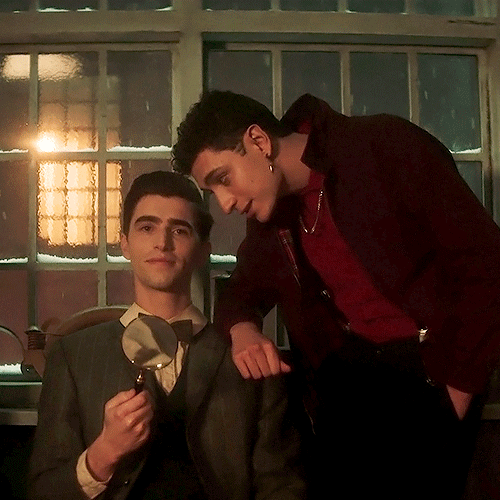
📚 STUFF I READ 📚
😍 Bound by Contract (BootsnBlossoms & Kryptaria) - 135K, 00Q00 - pt 2 of The Marketplace AU with Bond & Q figuring out how their relationship works for them and how Alec fits all while doing semi-canonical spy shit. Such a huge fan of this series.
😍 Out of the Dead Lands (orphan_account) - "Someone is building machines that look and act like people. Meanwhile, the Winter Soldier tries to be Bucky Barnes." - 62K, stucky, very angsty with a happy ending, robots, identity porn (of a sort) - SO GOOD! (thank you, unknown author, for orphaning your work instead of deleting it.)
💖💖 +207K of shorter fic so shout out to these I really loved 💖💖
February (xoxobuckybarnes) - MCU: stucky, 5K - Steve and Bucky celebrate Valentine's Day in Wakanda
if the bad times are coming let 'em come (suzukiblu) - MCU: shrinkyclinks, 9K - accidental interdimensional swap puts still recovering WS into 1940s with pre-serum Steve
Maybe Our Kind Don't Fit Round Here (Rainne) - MCU: shrunkyclunks, 5K - companion fic to above - 1940s pre-war Bucky with modern Steve
📺 STUFF I WATCHED 📺
Um, Actually - s1, e21-32
Royal Pains - s8, e1-8
Ghosts (US) - s3, e10
The Brokenwood Mysteries - s10, e1
D20: Fantasy High: Junior Year - "The Name" (s21, e17)
D20: Adventuring Party - "Five Years in the Making" (s16, e17)
Dead Boy Detectives - s1, e4-8
🎧 PODCASTS 🎧
⭐ Lost Notes - S1 Ep. 1: Louie Louie: The Strange Journey of the Dirtiest Song Never Written
Dinner’s on Me - Niecy Nash-Betts
Under the Influence - Ham on Wry: Sandwich Board Advertising
Under the Influence - Cars Are The Stars: Automobile Brands in Hollywood
⭐ Lost Notes - The True Story of ‘Tainted Love’
Worlds Beyond Number: Fireside - [One Shot] SPACE CRAM: Reasonable Hoop Dreams - "The Menlo County Summer League 3X3"
Pop Culture Happy Hour - Dead Boy Detectives
Homophilia - LOL LOL OMG LOL with Steve Yockey
WikiHole - Virginia (with Lauren Lapkus, Naomi Ekperigin and Mary Holland)
Switched on Pop - Best of 2024 so far: hip hop feuds, Hozier’s pop surprise and espresso shots
Pop Culture Happy Hour - Summer Guide
The Atlas Obscura Podcast - Old Cahawba
Wild Card - Jenny Slate turns fear inside out
It's Been a Minute - How Chicago's Black press shaped America
Consider This - Judi Dench reflects on a career built around Shakespeare
Shedunnit - The Murder on the Links
Vibe Check - Every Girl Has A Good Gay
⭐ 99% Invisible #580 - Mr Yuk
Today, Explained - One Flu Over The Cowcow’s Nest
The Atlas Obscura Podcast - Checking Into Hotel Imperial with Deborah Cohen
Pop Culture Happy Hour - The Idea Of You
Throughline - The 4th Amendment: Search and Seizure
⭐ If Books Could Kill - "Going Infinite": Michael Lewis Takes On Sam Bankman-Fried
⭐ You Are Good - My Own Private Idaho w. Cecil Baldwin
Dear Prudence - My Brother Is a Budding Alex Jones. Help!
⭐ Endless Thread - Episodes We Love: Doom Jelly
Pop Culture Happy Hour - The Fall Guy And What's Making Us Happy
Re: Dracula - May 3: Your Friend, Dracula
It's Been a Minute - An inside look at the campus protests; plus, Israel at Eurovision
Armchair Expert - Chris Pine
Re: Dracula - May 4: The Eve of St. George's Day
Today, Explained - The tourist tax
Welcome to Night Vale #247 - Rerun
🎶 MUSIC 🎶
The Who
Dua Lipa
Back to the Yacht
Endless R&B Throwbacks
Hozier
#sunday reading recap#bookgeekgrrl's reading habits#bookgeekgrrl's soundtracks#fanfic ftw#dropout tv#dead boy detectives really was so much fun#even if they are so very teenagers#i'm a sucker for a queerplatonic ride-or-die to the end of the line relationship‚ dead or alive#really hope they get a 2nd season#my new zealand comfort murder show is back!!!!#the who#hozier#dua lipa#yacht rock#99% invisible podcast#endless thread podcast#lost notes podcast#you are good podcast#if books could kill podcast#re: dracula#vibe check podcast#pop culture happy hour podcast#worlds beyond number: fireside podcast#welcome to night vale#the atlas obscura podcast#shedunnit podcast#switched on pop podcast#wikihole podcast#it's been a minute podcast#today‚ explained podcast
5 notes
·
View notes
Text

After V-E Day (peace in Europe) was declared on May 8, 1945 and later on when V-J Day (peace in Japan) was declared on August 15, 1945, the average age of what was on the road was nine years old. There was such a pent-up demand for new cars that it made no sense to redesign cars early. Many new cars were just warmed over 1942 models. There's an old adage that says, "Beauty is in eye of the beholder" and as the postwar Seller's Market slowly transitioned to a Buyer's Market that by 1949, four of the Independent car manufacturers would design some unique and radical looking cars. Independent automakers earn a 22 percent market share in 1948 versus just 9.3 percent in 1941.
Studebaker was the first company to redesign their line of cars in 1947, along with their catchy slogan, “First by far with a postwar car." Studebaker was highly successful. Then in 1948 both Hudson and Packard introduced their all-new postwar designs. The Hudson was a radically designed automobile known today as the "Step-down" Hudson. While Packard's all-new design was very successful for the company. Finally in 1949, Nash would introduce their cutting edge design. Out of the four automobiles that were introduced between 1947 and 1949 three looked like they attended the "upside down bathtub" school of design.
In 1948 Hudson introduced one of the best postwar designs that would continue through 1954. The new Hudson was low and sleek, with a low center of gravity allowing it to handle extremely well for the period. They quickly gained renown for superior handling and road-worthiness. Step-Down refers to Hudson's innovative body design that allowed the floor of the car to be placed lower than the frame-rails and door stills. This design allowed the driver and passengers to step down as opposed to stepping up as was the case with the other cars that were produced at that time. The occupants were fully surrounded by steel girders that Hudson called Monobilt construction which meant that the body and chassis were welded together. A long wheelbase ensured a comfortable ride and roomy interiors. The pontoon look, that was a radical departure from the fat fender look started in the mid-1930's and was retained until 1954. The pontoon look blends the front and rear fenders into one continuous line. It was soon copied by other automakers: Packard, Ford, Mercury, and Lincoln. The 1948 Hudson was offered in four trim levels: Commodore Six and Eight and Super Six and Eight they all had a 124-inch wheelbase. Weight rose by 13 percent, but the six-cylinder engine was new and more powerful. These new Hudson models brought Hudson prestige in the press and dominance on the race track while in the showroom Hudson's sales were up by 27 percent to 117,200 which was good for 10th place in industry sales. Hudson earned a $13.2 million profit on $274 million in sales, setting a new postwar record. The Step-Down Hudson evolved from wartime designs by Frank Spring, and chief engineer Millard Toncray. The Commodore Six ran with a sensational, durable new engine a 262-cid L-head that produced 121 bhp that put other eight cylinder cars to shame. The other engine was available on the Commodore Eight which had the 254-cid L-head eight rated at 128 bhp.
A point that is often overlooked in Hudson's history, is the choice that Hudson made to go to unitized body construction, where the body and chassis are welded together. This was a very advanced process that did allow for lighter weight and more chassis stiffness and when combine that with the ability to lower the structure (you sat in the frame, not on top of it), the Hudson cars were more advanced then their competition. However, unitized construction requires much more tooling costs to redesign the body style because you are changing the structure as well as the body sheet metal. That led to the Hudson styling remaining unchanged for seven years which was way too long to satisfy the customer especially when the competition was redesigning every few years. The second thing that hurt Hudson badly was the refusal to introduce a modern V-8. It is ironic that their choice to upgrade their Super Six to the 308-cid Hornet L-Head resulted in a quite powerful engine. Hudson Hornets had 165 horsepower when most competitors were making no better than 135. The third and most telling was the disaster of the Jet. Hudson had limited financial resources, and management decided to develop a compact-sized model instead of refurbishing its line of full-size cars and developing its own V-8. However, Hudson was unable to foresee the dramatic decline in overall compact car sales during the 1952-1954 period which already included three other makes The miscalculation of the Jet helped to destroy the Hudson Motor Car Company. Consequently, the company was forced to merge with Nash-Kelvinator (forming American Motors on May 1, 1954) because of the losses resulting from the Jet project and the falling sales of Hudson's senior line.
Packard outsold Cadillac by almost 20 percent in 1948, but it was for the last time. Although Packard ultimately posted a net profit of $5.3 million for the calendar year, ongoing problems with production and raw materials resulted in operating losses through much of the year. Sales for the 1950 model year declined sharply, as did Packard’s market share, which fell by more than 30 percent from 1948 to 1950. Packard did not adhere to the conventional model year designations until 1951. These models were built from August, 1947, through May, 1949 and were considered the Series 22. The first of these Packard models appeared in August 1947 as convertibles. Packard's 1948 profile was based on the prewar Phantom show car that was built for Ed Macauley. Appearance changes included a longer hood; "ox-yoke" shaped upper grille; full-width, wraparound lower grille; a pair of simplified, vertical front bumper guards; and smoother, rounded body lines, often referred to as the "inverted bathtub" or "soap bar" look. The new Packard body styling was awarded a "Fashion Car of the Year" gold medal by the New York Fashion Academy. At exhibits throughout the world in 1947-1948, the new Custom Victoria Convertible Coupe was honored for its advanced styling. A dashboard with black-lighted "Flite-Glo" instrumentation was a new feature, and tool kits were provided with each new Packard sold. Heavy chucks of sheet-metal were tacked onto the structure to create a flowing-fender effect that added about 200 pounds and yielded a chubby profile. Unfortunately, sharp eyed car buyers nicknamed Packard the, "Pregnant Elephant." A short squat grille did not help matters, as it was far less elegant then the tall narrow grille of the 1946 and 1947 models. For 1948 a new top-of-the-line 327-cid 145-horsepower engine was available for the first time in the Super series. Packard made eight-cylinder engines in 288, 327, 356-cid, these were rated at 130, 145 and 160 horsepower, respectively. Packard's six cylinder engine was reserved for the taxi and limousine models only selling around 2,000 cars. The wooden body work (maple panels framed with birch) of the Station Sedan (station wagon) was structural only at the smallish tailgate. Wood at the door panels and window frames were inlaid.
The Standard Eight had the plainest Packard hood ornament, single rocker panel strips, upper belt moldings running from below the front vent panes to the rear, and no lower belt moldings at mid-body level as did the more expensive models. While the DeLuxe Eights were the same basic cars as the Standard Eight with extra exterior trim and better interior appointments that were also fitted to the Super Eights. As in years past, Packard offered several hood ornaments. Standard on the Packard Eight, was a low "flying wing," but buyers could opt for the "Goddess of Speed," irreverently known as the "boy with the donut," or the "Egyptian," which looked like a fancied 1949 Ford hood ornament. Standard on the Custom Eight was the graceful Cormorant, which Packard would call the Pelican in 1949-1950. DeLuxe Eight models were also fitted with a fancier wheel treatment. The Super Eight was Packard's mid-priced line of cars that had nicer interior materials. Exterior trim was little different than that of the Standard Eights, except for the Super DeLuxe sedan, which was trimmed in the manner of the DeLuxe Eight. In the rear there chrome divider bars on the tail light lenses. At the top was the Custom Eight which was Packard's luxury series, it had the highest horsepower output, but due to their larger size, not the highest power to weight ratio. The egg-crate style grille design was exclusive to the Custom Eight and a beauty panel, of a similar pattern stretched across the rear body to encase the tail-lamps with its bright metal scroll design. Rear wheel fender skirts were standard equipment and a double rocker panel strip ran the full length on the body sides. A graceful, vertical cormorant mascot was this model's hood ornament. Also introduced in 1948 was the all-new Super Eight Victoria Convertible Coupe it was Packard's first open car since 1942. The Super convertible had a single rocker panel strip and fender skirts were standard while the wheelbase was 120 inches while the interior materials was all-leather. Model year production for Packard jumped to 81 percent to 92,251 cars sold for 13th place in the industry.
When Charles W. Nash died on June 6, 1948 in Beverly Hills, California he left an estate worth around $50 million dollars. Nash who founded the company had hand-picked George Mason as his successor, partly on the belief that Mason was a fiscal conservative like himself. It's doubtful that Nash ever regretted his choice, for Mason ran the company very well indeed, avoiding the pitfalls that had killed off so many other independent automakers. On October 27, 1936, it was announced that Nash Motors and the Kelvinator Corporation would merge on January 4, 1937, to form Nash-Kelvinator Corporation that placed George W. Mason at the helm of the combined company. By 1945, Nash was a solid company that had earned a reasonable return on its wartime contracts and had plenty of cash on hand to retool for the future. Mason understood the need for fiscal responsibility, but a part of him yearned to take a chance on something a bit daring, bold, and out of the mainstream. He believed that the way to ensure success for a smaller independent automaker was to offer cars noticeably different from those of the Big Three. Mason realized that once the pent-up demand was over the market would quickly turn cold and cruel. Knowing that he would need an all-new car when competitive conditions returned, he settled on 1949 as the year he would introduce the first all-new postwar Nash. This would be the car that would lead the firm into the future.
Preliminary work on the 1949 had actually begun during the war, 1943 to be exact. When the 1949 Nash Airflyte was introduced it was a standout, easily identifiable to the man on the street -- exciting and exotic all at once. With its headlines screaming "Now-Everybody Wants It!" The envelope shape was the most streamlined form on the road, a large step ahead of the vaguely similar Packard. The design of the Nash Airflyte generated just 113 pounds of drag at 60 mph, compared to 171 for Packard. The rounded fenders flowed smoothly, their gentle corners eased a path through the wind. At 62 inches tall, the new car stood six inches lower than the 1948 Nash, and the windshield was one piece and curved. Semi-enclosed rear wheel housings had been a feature on the previous Nash models, but for this daring postwar design both front and rear wheels were now enclosed. George Mason championed the enclosed wheels as a boldly innovative feature -- and a Nash exclusive. So pure, was the Aero look that buyers had to come up with an extra $9 if they wanted the "Flying Lady" hood ornament. The only downside was no convertible models and two-door coupes were made. To many eyes the design seems simply the logical extension of the "bathtub" look that had been successfully done at Hudson and Packard.
The interior was just as exciting as the exterior was the "Super-Lounge" interior ("Sky-Lounge" in 1950) which featured a modern minimalist look that was deliberately designed to be recessive in tone and restful to the eye with no distractions. "No need ever to take your eyes off the road . . . all instrument dials are grouped just below eye-level, on your steering post. That's the Uniscope." Tied in with the Uniscope pod was a recessed dashboard: "Everything that could be has been built in, out-of-sight. In addition, the all-coil spring suspension provided a truly luxurious ride, and the Aero design kept wind noise to a minimum. Nash's Weather Eye Conditioned Air System was considered to be the best in the industry. Nash had previously offered a bed option in its cars, but for 1949 it introduced "the new Nash Twin Bed arrangement." The bed (or beds) were formed by dropping the front seat backs to meet the rear seat. Special mattresses were optional, and window screens were soon offered, much to the comfort of campers who wanted to let air in and keep mosquitoes out.
For 1949, Nash converted to unit-body construction exclusively since the new cars shared their chassis as well as their bodies plus there was no extra stiffening underneath the more expensive Ambassador. Nash called it Unitized or Airflyte Construction, and claimed it was 1 1/2 to 2 1/2 times as rigid as conventional cars, partly because of its 8,000 electronic welds. Both series shared identical styling. The 600 series rode a 112-inch wheelbase, while the Ambassador boasted a 121-inch wheelbase. The Ambassador's extra nine inches were ahead of the windshield, so longer front fenders and hood were fitted as well. The body sharing meant that interior dimensions were identical. Both cars were available in just two body styles, a two-door and four-door sedan, though the first was also offered as a Brougham, which differed only on the interior. All were available in three trim levels: Super, Super Special, and Custom. The 600 model came with Nash's four-main-bearing flat-head six displacing 172-cid and was rated at a modest 82 bhp. The Ambassador boasted a larger 234-cid overhead-valve six that put out 112 bhp. Nash's model-year production jump 23 percent to a record 142,592 which was good for 10th place in industry sales and a $26 million profit for Nash.
3 notes
·
View notes
Photo
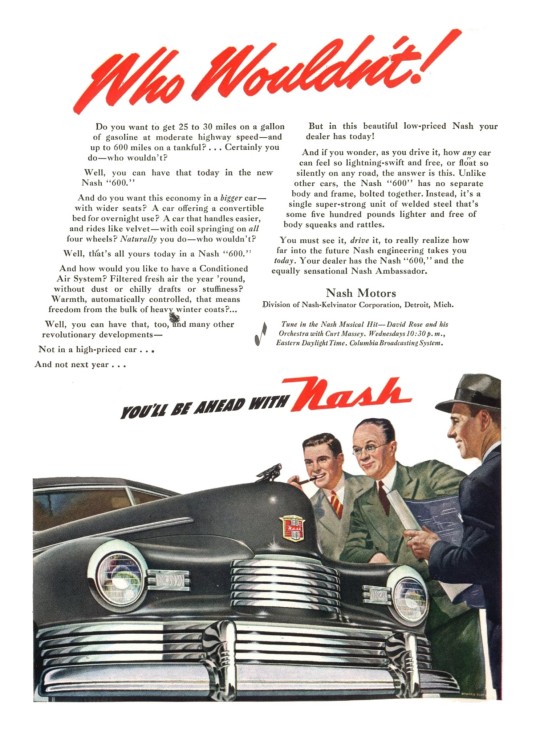
1946 Nash 600. Who Wouldn't!
Source: Time Magazine
Published at: https://propadv.com/automobiles-ad-and-poster-collection/nash-ad-and-poster-collection/
9 notes
·
View notes
Text
OC Name Game
Thanks for tagging me, @dotr-rose-love!
Rules: Put down an OC or more and tell what their name means.
Amelia: Hardworking, Industrious
Matilda/Mar: Mighty/Ocean or To Ruin
Vinny/Vincenzo: Only ever a nickname/Conqueror, Victor
Makoto/Akiko/Koko: Truth/Autumn Child or Shining Child/Stork or Night, or a nickname
James/Rolls: Substitute or Replacement/Generally a nickname for someone overweight, here a reference to Rolls Royce brand automobiles
Joan/John/Nash: Graced by God, feminine form/Graced by God, masculine form/By the Ash Tree
6 notes
·
View notes